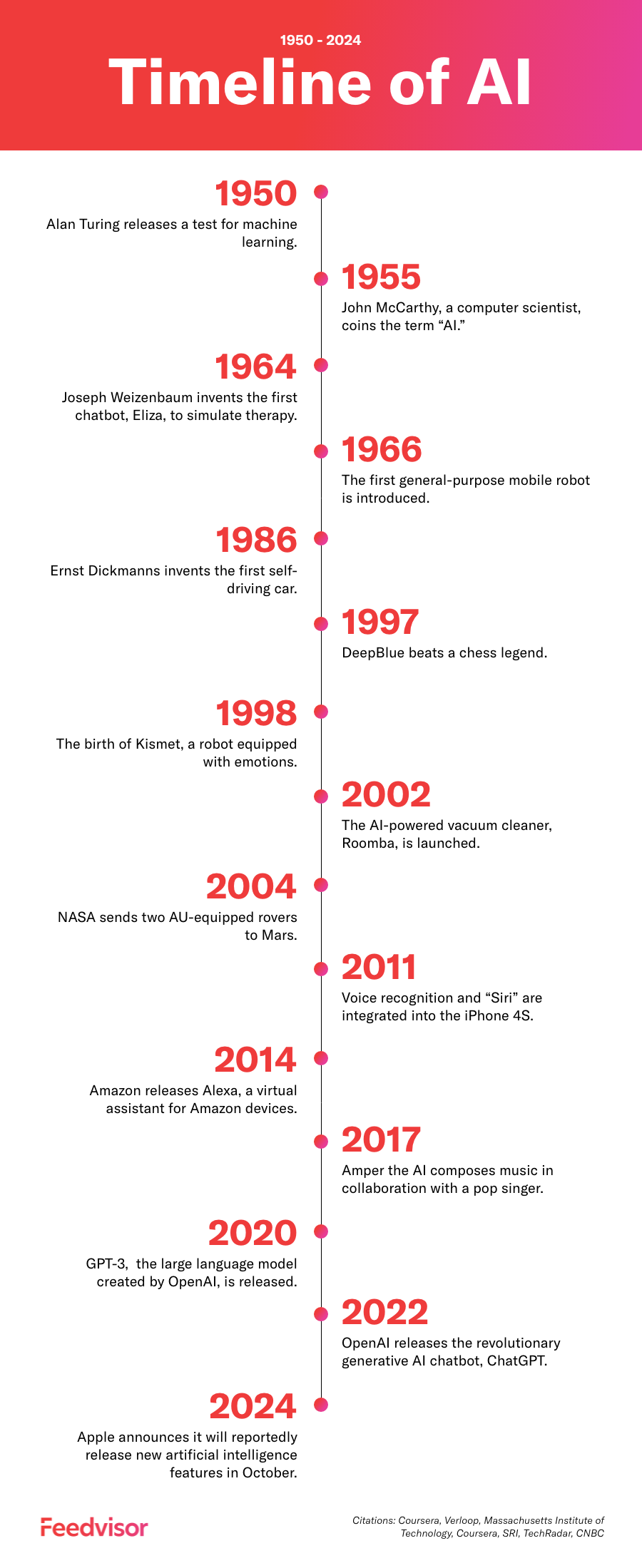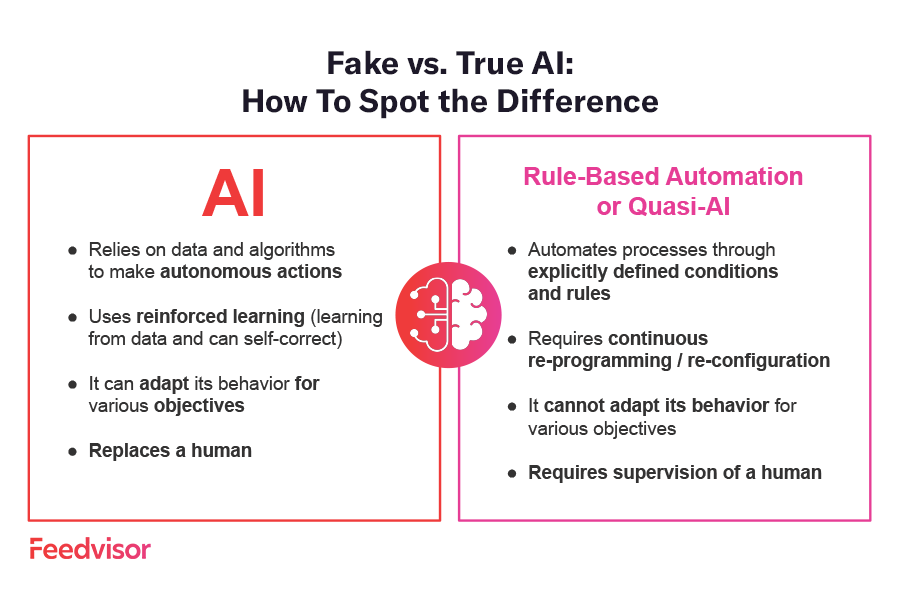Resources - Blog
What Is True AI and How Can It Help Amazon Sellers?

Artificial intelligence has been a cornerstone of technological advancement for decades, but recent innovations have thrust it into the spotlight. Major brands and retailers are now fiercely competing to leverage the latest AI technology to enhance customer satisfaction and optimize efficiency. Feedvisor’s CEO and Founder, Victor Rosenman, recently brought this topic to center stage in his live presentation, “Exploring the AI Revolution: How Artificial Intelligence is Reshaping Amazon Selling.” In it, he broke down the complexities behind AI, and just as important, how AI technologies impact Amazon merchants.
Amazon, for instance, introduced its AI assistant, Rufus, just in time for Prime Day, enabling customers to get instant answers to thousands of shopping queries. On a broader scale, tech giants like OpenAI and Google are pushing boundaries with their new AI-driven search engines, SearchGPT and Gemini, respectively. Of course, a conversation about AI is incomplete without the mention of ChatGPT which took the world by storm with its debut in 2023. The chatbot surpassed 1 million users just five days after it launched, and its user base continues to grow.
Amidst the rapid advancements in AI, Amazon sellers have numerous opportunities to leverage this technology to revolutionize their businesses. However, it’s easy to fall into the trap of using quasi-AI — technology that masquerades as true AI. Below, we’ll break down the definition of true AI, how to distinguish it from its counterfeit counterparts, and the ways it can benefit Amazon sellers.
What Is True AI?
According to Feedvisor Founder and CEO, Victor Rosenman, we now live in an age of big data — and new innovations in AI and ML have made it possible to analyze vast amounts of data in real-time.
While artificial intelligence has become a hot topic in recent years, its inception can be dated back to the 1940s.

At a high level, AI is powered by:
- Reinforcement learning (RL): This enables machines to make decisions through trial and error. In RL, agents interact with their environment, taking actions and receiving rewards or penalties as feedback. Over time, they learn to optimize their actions to achieve the best outcomes.
- This approach is crucial for autonomous systems like self-driving cars and robotics, where learning from experience drives improvement.
- Explainable AI and Model Interpretability: Explainable AI (XAI) and model interpretability focus on making AI decision-making processes more transparent. As AI models, especially deep learning networks, grow more complex, they often become “black boxes” where their decision-making is unclear. XAI aims to clarify these processes, helping people understand, trust, and manage AI outcomes effectively.
A common myth is that all automation is AI. In reality, there’s a key difference between rules-based automation, which can be misleadingly labeled as “Fake AI,” and genuine AI.
- True AI:
- Relies on data and algorithms to make autonomous decisions without explicit guidance
- Is capable of reinforced learning — or learning from data to then self-correct
- Rules–based automation:
- Automates processes through explicitly defined conditions and rules
- Requires continuous re-programming or re-configuration
True AI: Examples in the Amazon E-Marketplace
For the average Amazon seller, it’s crucial to grasp AI’s impact on the Amazon ecosystem.
AI has revolutionized nearly every facet of the Amazon e-marketplace, from packaging and shipping to targeted advertising and more. It automates tasks once handled by humans, boosting productivity and cutting costs. Key applications include:
- Customer Service
- Product Research
- Inventory Management
- Listing Optimization
- Dynamic Pricing
- Advertising Optimization & Campaign Management
How Can True AI Help Amazon Sellers?
AI offers limitless possibilities, but for Amazon sellers, it’s especially valuable in capturing and converting demand. Manual pricing approaches, for instance, struggle to keep up with constant changes in pricing and demand. Only AI-driven algorithmic repricers can quickly adapt to real-time fluctuations in market conditions and competitor actions, enabling sellers to adjust prices dynamically and secure a higher Buy Box share.
Fake vs. True AI: How Sellers Can Spot the Difference
Many companies claim their AI can help Amazon sellers, but these claims are often overstated. To ensure you’re getting true AI —rather than automated rules— use the guidelines below to evaluate whether the AI you’re using meets the criteria for genuine AI.

Dynamic Pricing
Dynamic pricing is a prime example of how AI can benefit Amazon sellers. Sellers’ products are influenced by various factors, such as demand patterns and price elasticity. Take Feedvisor’s AI-driven algorithmic pricing technology, which can independently test different price points, create dynamic demand models, and adjust prices in real-time to maximize both demand and profitability.
Although rules-based repricers may claim to use AI, true AI-first algorithms meet the criteria outlined in our chart above.
- The actions performed by the AI —specifically, dynamic price changes— are autonomous.
- Reinforced learning is used to:
- Continuously build dynamic demand models through price exploration.
- Continuously learn the impact of price changes, competition, and seasonality on demand.
- It adapts to various business objectives, such as:
- Increase margin, maintain sales.
- Increase sales, maintain margin.
- Maximize sales, regardless of margin.
- It replaces human intervention by eliminating the need for a person to manage pricing.
Holistic Optimization
Pricing is only one part of the equation for Amazon success. To truly excel, sellers need to both capture and convert demand, but optimizing advertising and pricing manually can be difficult and time-consuming.
Holistic solutions, like Feedvisor’s integrated e-marketplace solution, offer a way forward. Using proprietary AI and big data, Feedvisor provides real-time price and bidding optimization that work together to continuously boost revenue and market share across e-marketplaces. Following the criteria below, Feedvisor checks off all of the boxes for true AI.
- The actions performed by its AI —specifically, dynamic price changes and advertising optimization— are autonomous.
- Reinforced learning is used to:
- Learn the price elasticity of demand and choose the appropriate pricing action to amplify campaign performance
- It adapts to various business objectives, such as:
- Sales Objectives
- Advertising Efficiency Objectives
- It replaces human intervention by eliminating the need for a person to manually coordinate between pricing and advertising actions.
Final Thoughts
Unlocking the potential of true AI can be a game-changer for Amazon sellers, transforming how you operate and compete. By differentiating between authentic AI and mere automation, you can harness technology that not only makes autonomous decisions but also adapts and evolves with real-time data. This means smarter pricing, sharper advertising strategies, and better overall e-marketplace performance — all leading to increased sales and bigger Buy Box share.
Curious to see how true AI can reshape your business? Dive into Feedvisor’s AI-powered e-marketplace optimization platform with our free 14-day trial. Experience firsthand how our innovative AI-powered algorithmic technology can elevate your Amazon selling strategy and give you a competitive edge.

